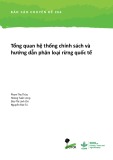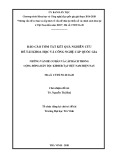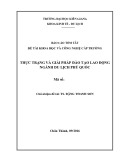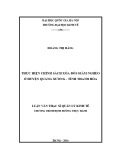
Open Access
Available online http://ccforum.com/content/10/4/R101
Page 1 of 9
(page number not for citation purposes)
Vol 10 No 4
Research
Corticosteroids influence the mortality and morbidity of acute
critical illness
Mohamed Y Rady1, Daniel J Johnson1,2, Bhavesh Patel1, Joel Larson1 and Richard Helmers1
1Department of Critical Care Medicine, Mayo Clinic College of Medicine, Mayo Clinic Hospital, Mayo Clinic, Phoenix, Arizona, USA
2Department of Surgery, Mayo Clinic College of Medicine, Mayo Clinic Hospital, Mayo Clinic, Phoenix, Arizona, USA
Corresponding author: Mohamed Y Rady, editorial@ccforum.com
Received: 18 Apr 2006 Accepted: 26 Jun 2006 Published: 17 Jul 2006
Critical Care 2006, 10:R101 (doi:10.1186/cc4971)
This article is online at: http://ccforum.com/content/10/4/R101
© 2006 Rady et al.; licensee BioMed Central Ltd.
This is an open access article distributed under the terms of the Creative Commons Attribution License (http://creativecommons.org/licenses/by/2.0),
which permits unrestricted use, distribution, and reproduction in any medium, provided the original work is properly cited.
Abstract
Introduction Use of corticosteroids for adrenal
supplementation and attenuation of the inflammatory and
immune response is widespread in acute critical illness. The
study hypothesis was that exposure to corticosteroids
influences the mortality and morbidity in acute critical illness.
Methods This case–control retrospective study was performed
in a single multidisciplinary intensive care unit at a tertiary care
institution and consisted of 10,285 critically ill patients admitted
between 1 January 1999 and 31 December 2004.
Demographics, comorbidities, acute illness characteristics
including severity measured by Sequential Organ Failure
Assessment, concurrent medications, therapeutic interventions
and incidence of infections were obtained from electronic
medical records, were examined with multiple regression
analysis and were adjusted for propensity of corticosteroid
exposure. The primary outcome was hospital death, and the
secondary outcome was transfer to a care facility at hospital
discharge.
Results Corticosteroid exposure in 2,632 (26%) patients was
characterized by younger age, more females, higher Charlson
comorbidity and maximal daily Sequential Organ Failure
Assessment scores compared with control patients.
Corticosteroids potentiated metabolic and neuromuscular
sequels of critical illness with increased requirements for
diuretics, insulin, protracted weaning from mechanical
ventilation, need for tracheostomy and discharge to a care
facility. Early exposure to corticosteroids predisposed to
recurrent and late onset of polymicrobial and fungal hospital-
acquired infections. Corticosteroids increased the risk for death
or disability after adjustments for comorbidities and acute illness
characteristics.
Conclusion Corticosteroids increased the risk for death or
disability in critical illness. Hospital-acquired infections and
metabolic and neuromuscular sequels of critical illness were
exacerbated by corticosteroids. Careful appraisal of the
indications for use of corticosteroids is necessary to balance the
benefits and risks from exposure in acute critical illness.
Introduction
Administration of corticosteroids in a variety of settings in
acute critical illness has become widespread. Corticosteroids
are used therapeutically for relative adrenal insufficiency as
well as for the attenuation of the inflammatory and immune
response in the critically ill [1]. Early use of corticosteroids has
been recommended in sepsis, acute lung injury, acute respira-
tory distress syndrome and refractory vasodilatory shock [2-5].
The Corticosteroid Randomization after Significant Head
Injury study, a large, international, randomized placebo-con-
trolled trial, was terminated after enrolment of 10,000 patients
because of an unexpected rise in the death rate after early
administration of corticosteroids [6]. That study report raised
concerns with regard to the safety of corticosteroids since, up
to that time, they had been liberally administered in a variety of
life-threatening illnesses with the intent to improve survival.
These concerns were substantiated when we observed, in a
previous study, that administration of corticosteroids
increased the mortality in vasopressor-dependent critical ill-
ness [7]. A similar observation of an unexpected increase in
mortality from corticosteroids use was also reported from a
randomized controlled trial of corticosteroids in late acute res-
piratory distress syndrome [8].
The morbidity related to metabolic, immune and musculoskel-
etal side-effects of corticosteroids in noncritical illness has
ICU = intensive care unit.

Critical Care Vol 10 No 4 Rady et al.
Page 2 of 9
(page number not for citation purposes)
been recognized and has created great interest in developing
alternative treatments to avoid these complications. In trans-
plantation practice, the therapeutic use of corticosteroids for
immunosuppression has decreased because of the introduc-
tion of other therapies targeted against specific cytokines
including tumour necrosis factor and interleukins or selective
lymphocytes calcineurin inhibition [9,10]. New immunosup-
pression regimes produced superior allograft survival and yet
had fewer side effects than traditional high-dose corticoster-
oids [11,12]. For autoimmune inflammatory disorders and
rheumatologic diseases, the use of corticosteroids has also
declined because of better treatment options targeting inflam-
matory cytokines known to influence the progression of these
conditions [13-16].
The use of corticosteroids in noncritical illness has gradually
diminished, yet their use in acute critical illness appears to be
expanding in relative adrenal insufficiency, sepsis and sys-
temic inflammatory organ injury. This study was designed to
address the following questions: What are the frequency and
patient characteristics associated with corticosteroid use in
acute critical illness? Does the exposure to corticosteroids
influence death or disability? What were the mechanisms for
the observed effects of corticosteroids in acute critical illness?
This study was a retrospective case–control analysis of all
admissions to an adult intensive care unit (ICU) with exposure
to corticosteroids defining the case group.
Patients and methods
Study population
The study was granted approval and exemption by the Mayo
Foundation Institutional Review Board. The study was per-
formed at Mayo Clinic Hospital, a 220-bed hospital. Patients
(≥ 18 years old) were admitted to a closed, 20-bed, multidis-
ciplinary ICU (medical, surgical and coronary care) between
January 1999 and December 2004.
Data collection
The patient demographics, comorbidities, type of admission,
therapeutic interventions, acute diagnosis and disposition at
hospital discharge were obtained from electronic medical
records, which were interfaced into an institutional replicated
database and extracted electronically [17]. The initial admis-
sion was designated as the index admission for those patients
with multiple hospital admissions during the six years. Comor-
bidities were determined by Romano and colleagues' criteria
to calculate the Charlson comorbidity score [18]. Diagnoses
recorded for the index admission were used to develop the
acute hospital diagnosis categories [17]. The severity of ill-
ness in the ICU was determined by the Sequential Organ Fail-
ure Assessment score, calculated based on the graded
severity of dysfunction of six organ systems: neurological, pul-
monary, cardiovascular, hepatic, renal and coagulation
[19,20]. The length of stay and time intervals were calculated
in hours and then expressed as fractions of days. Hospital dis-
charge to acute, subacute or long-term nursing care, to inpa-
tient rehabilitation, to long-term ventilation or to other types of
extended care facilities was utilized as a surrogate marker for
disability.
Medication
All medication given during the hospital stay was tracked by
the pharmacy database in LastWord 4.1 for Windows (IDX
Systems Corp., Burlington, VT, USA), which recorded the date
and time of administration, the dose administered and the
route of administration. Catecholamine infusion included nore-
pinephrine, phenylephrine, epinephrine, dopamine, dob-
utamine or milrinone. Exposure to corticosteroids was defined
as either via intravenous or enteral administration routes. The
total cumulative doses of corticosteroids were calculated dur-
ing the entire hospital stay and are expressed as hydrocorti-
sone equivalents according to the glucocorticoid effect.
Microbiology and diagnosis of infections
Microbiological cultures were obtained to confirm infection
based on established clinical criteria. First, the development of
vasodilatory shock: persistent hypotension (mean arterial
pressure ≤ 60 mmHg) after adequate volume resuscitation to
a central venous pressure between 12 and 15 mmHg [21] and
requiring initiation of vasopressor therapy for greater than 24
hours. The second criterion was the presence of two or more
of the following criteria for systemic inflammatory response
syndrome: temperature >38.5°C or <35.6°C, white cell count
>11,000 cells/mm3 or <4,000 cells/mm3, immature neu-
trophils (bands) >10%, respiratory rate >20/minute, PaCO2
<35 mmHg or requirement for mechanical ventilation, and
heart rate >90/minute [22]. Third was the presence of unex-
plained acute organ dysfunction not due to underlying disease
or medications: confusion, restlessness, altered mental status
(acute change from baseline) or oliguria. The final criterion was
initiation of empiric antibiotics therapy.
The dates and times of cultures performed, including the spec-
imen source, microscopic examination and the semiquantita-
tive organism count, were stored in an electronic database in
LastWord 4.1 for Windows (IDX Systems Corp.). Infection
was confirmed by the following: the presence of polymorph
nuclear cells in normally sterile body fluid; a culture or Gram
stain of blood, sputum, urine or normally sterile body fluid pos-
itive for pathogenic microorganisms; and a focus of infection
identified by visual inspection (such as, bowel perforation with
content at time of surgery, wound with purulent discharge, pul-
monary consolidation on thoracic imaging).
Microorganism growth quantified as 2+ or >15 colony-form-
ing units were considered clinically significant. The date and
time of hospital admission was considered the reference time
point for each patient to determine the temporal characteris-
tics of infection episodes documented during the hospital
stay. Hospital-acquired infection was defined as a new

Available online http://ccforum.com/content/10/4/R101
Page 3 of 9
(page number not for citation purposes)
episode of infection developing >48 hours from hospital
admission. Recurrent infection was indicated by two or more
episodes of infections with different microorganisms at sepa-
rate times during a hospital stay. Polymicrobial infection was
defined as the presence of two or more types of microorgan-
isms from a single location of infection at the same time.
Statistical analysis
Corticosteroid exposure during the hospital stay defined the
case group versus the control group. Analysis was performed
with Student's t test or Wilcoxon's rank sum test when appro-
priate. Categorical variables were analysed by chi-square test
or Fisher's exact test as appropriate. A nonparametric test of
the median (number of points above the median) was per-
formed where appropriate for comparison of the length of stay.
For group comparison, the exact P values were reported for
each comparison, and Bonferroni correction was applied
because of multiple comparisons so that P < 0.001 was con-
sidered statistically significant between groups.
Preadmission comorbidities, age, sex, type of admission, use
of catecholamines, and respiratory and neurological diagnosis
were included in a logistic model to calculate the propensity
score (the probability for exposure to corticosteroids) for each
study patient. The propensity score was included as a covari-
ate in multiple regression analysis for the primary outcome
endpoint, death while in the hospital (hospital death), and for
the secondary outcome endpoint, discharge to a care facility
(disability). The likelihood ratio test determined the cut-off
value for the maximal daily Sequential Organ Failure Assess-
ment score.
Stepwise multiple logistic regressions were performed on
three groups of predictors: preadmission comorbidities, type
Table 1
Preadmission comorbidities and types admission of the study cohort
Control group (n = 7,626) Corticosteroid exposure group (n = 2,632) P
Age (years) 72 (48–84) 67 (43–82) 0.0001
Female 2,860 (38) 1,147 (44) 0.0001
Body mass index (kg/m2) 26 (20–35) 26 (20–35) 0.8
Peripheral arterial disease 777 (10) 221 (8) 0.008
Cerebral vascular disease 159 (2) 23 (1) 0.0001
Neurological disease (degenerative brain
disease)
1,048 (14) 396 (15) 0.1
Congestive heart failure 974 (13) 361 (14) 0.2
Hypertension 3,687 (48) 995 (38) 0.0001
Diabetes mellitus 1,359 (18) 436 (17) 0.1
Liver disease 636 (8) 351 (13) 0.0001
Malignancy 1,179 (15) 685 (26) 0.0001
Chronic obstructive pulmonary disease 870 (11) 565 (21) 0.0001
Pulmonary disease (restrictive and obstructive) 1,025 (13) 663 (25) 0.0001
Renal disease 577 (8) 223 (8) 0.9
Connective tissue disease 88 (1) 197 (7) 0.0001
Cachexia 157 (2) 126 (5) 0.0001
Charlson comorbidity score 1 (0–4) 2 (0–5) 0.0001
Indications for corticosteroids
Relative adrenal insufficiency - 1,022 (39) -
Anti-inflammatory action - 1,270 (48) -
Immunosuppression - 340 (13) -
Types of admission
Coronary care unit 1,561 (20) 211 (8) 0.0001
Medical 2,623 (34) 1,168 (44) 0.0001
Surgical 3,442 (46) 1,253 (48) 0.1
Data presented as median (10–90% percentiles) or actual numbers (percentage).

Critical Care Vol 10 No 4 Rady et al.
Page 4 of 9
(page number not for citation purposes)
of admission with hospital and intensive care, and hospital
diagnosis category. All factors that were significant at P < 0.1
from each group were entered into the final logistic models.
Calibration of the final logistic models was examined by Hos-
mer-Lemeshow goodness-of-fit. Discrimination of the logistic
models was examined by the area under the receiver operating
characteristic curve.
All statistical tests were two-tailed and significance was
accepted at P < 0.05. Statistical analysis was performed
Table 2
Acute illness characteristics including hospital care, intensive care and outcome for the study cohort
Control group (n = 7,626) Corticosteroid exposure group (n = 2,632) P
Hospital and intensive care
Maximal daily Sequential Organ
Failure Assessment
3 (0–9) 4 (1–11) 0.0001
Mechanical ventilation 1,889 (25) 765 (29) 0.0001
Mechanical ventilation ≥ 96 hours 297 (4) 372 (14) 0.0001
Tracheostomy 124 (2) 204 (8) 0.0001
Intensive care stay (days) 1.2 (0.2–4.6) 1.9 (0.3–9.6) 0.0001
Hospital stay (days) 5.1 (1.3–12.4) 6.8 (2.0–19.0) 0.0001
Corticosteroid exposure
Hydrocortisone 0 293 (11)
Dexamethasone 0 783 (30)
Methyl prednisone or prednisone 0 1,556 (59)
Start day of corticosteroids 0 0 (0–4)
Corticosteroid exposure time (days) 0 3 (1–13)
Total hydrocortisone equivalent (mg) 0 900 (100–6,600)
Concurrent medication
Catecholamine infusions 2,973 (39) 1,291 (49) 0.0001
Antibacterial antibiotics 5,217 (68) 2,318 (88) 0.0001
Antifungal antibiotics 419 (5) 557 (21) 0.0001
Diuretics 4,360 (57) 1,702 (65) 0.0001
Insulin 2,424 (32) 1,266 (48) 0.0001
Proton pump inhibitors or Histamin-
2 blockade
5,142 (67) 2,205 (84) 0.0001
Hospital diagnosis category
Cardiovascular 2,348 (31) 790 (30) 0.5
Respiratory 1,346 (18) 774 (29) 0.0001
Neurological 876 (11) 440 (17) 0.0001
Fluid and electrolytes abnormalities 1,504 (20) 694 (26) 0.0001
Postoperative complications 856 (11) 406 (15) 0.0001
Gastrointestinal 1,023 (13) 381 (14) 0.2
Acute renal failure 375 (5) 265 (10) 0.0001
Hospital outcome
Hospital death 327 (4) 261 (10) 0.0001
Discharge to a care facility 1,562 (20) 762 (29) 0.0001
Data presented as median (10–90% percentiles) or actual numbers (percentage).

Available online http://ccforum.com/content/10/4/R101
Page 5 of 9
(page number not for citation purposes)
using JMP Statistical software (version 5.1; SAS Institute Inc.,
Cary, NC, USA).
Results
Cohort description
There were 10,258 patients admitted to the ICU, 2,632 (26%)
of whom received corticosteroids. Patients receiving corticos-
teroids were more likely to be younger and female (Table 1).
Liver disease, malignancy, chronic obstructive or restrictive
pulmonary disease, connective tissue disease and cachexia
were more frequent comorbidities in patients who received
corticosteroids and were reflected by a higher Charlson
Comorbidity score than in control patients. Relative adrenal
insufficiency or anti-inflammatory action constituted the major-
Table 3
Microbiological characteristics of the study cohort
Control group (n = 7,626) Corticosteroid exposure group (n = 2,632) P
Microbiology
Number of patients with cultures 3,185 (42) 1,764 (67) 0.0001
Infection confirmed 1,785 (23) 1,215 (46) 0.0001
Location of infection n = 1,785 n = 1,215
Pulmonary 578 (32) 489 (40) 0.0001
Abdomen 197 (11) 147 (12) 0.4
Genital–urinary tract 703 (39) 425 (35) 0.02
Bloodstream 500 (28) 376 (31) 0.09
Soft tissue 165 (9) 90 (7) 0.08
Vascular catheters 156 (9) 158 (13) 0.0002
Skeletal 54 (3) 24 (2) 0.08
Central nervous system 46 (3) 47 (4) 0.05
Head and neck 17 (1) 21 (2) 0.07
Other 16 (1) 9 (1) 0.7
Temporal characteristics n = 1,785 n = 1,215
Infection episode ≤ 2 days after admission 1,228 (69) 820 (67) 0.5
Infection episode >2 days after admission 883 (49) 669 (55) 0.003
Recurrent infectiona633 (35) 521 (43) 0.0001
Day of last infection episode during a hospital
stay
2 (0–13) 3 (0–19) 0.003
Interval between first and last infection
episodes (days)
0 (0–10) 0 (0–15) 0.0001
Interval between first and last infection
episodes >2 days
434 (24) 402 (33) 0.0001
Types of microorganisms (culture or microscopy) n = 1,785 n = 1,215
Bacterial
Gram-positive cocci 1,255 (70) 903 (74) 0.02
Gram-negative bacilli 744 (42) 487 (40) 0.4
Other types of bacillib299 (17) 221 (18) 0.3
Anaerobesc182 (10) 112 (9) 0.4
Gram-negative cocci 66 (4) 38 (3) 0.4
Fungal 404(23) 508 (42) 0.0001
Number of types of microorganisms per location 1 (1–4) 2 (1–6) 0.0001
Polymicrobial infectiond838 (47) 683 (56) 0.0001
Data presented as median (10–90% percentiles) or actual numbers (percentage). Cultures included blood, sputum, urine, normally sterile body
fluid or tissue. aTwo or more infection episodes during a hospital stay. blisteria, Corynebacteria, Actinomyces, bacilli Sp., Legionella and
Mycobacterial species; cClostridia, Bacteroids, Peptostreptococci, and Peptococci species.. dTwo or more types of organisms present at the
same location site of infection.


![Liệu pháp nội tiết trong mãn kinh: Báo cáo [Mới nhất]](https://cdn.tailieu.vn/images/document/thumbnail/2024/20240705/sanhobien01/135x160/4731720150416.jpg)























